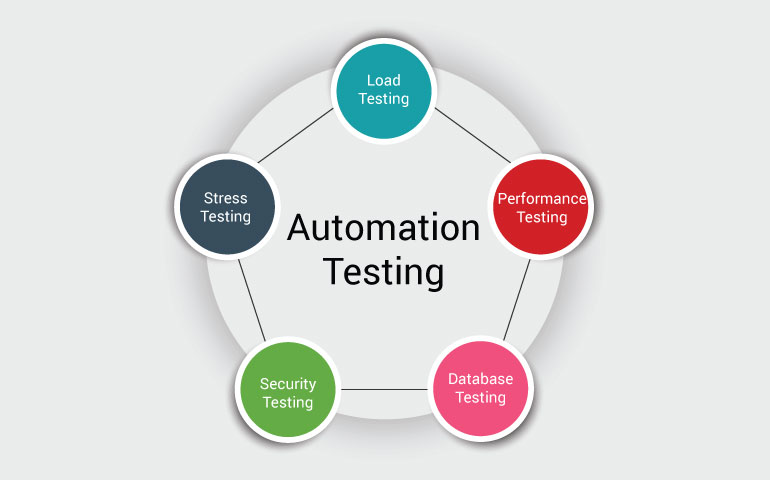The Ultimate Overview to Implementing Automation Testing Efficiently
The Ultimate Overview to Implementing Automation Testing Efficiently
Blog Article
Making Sure Success in Automation Testing: Key Metrics, Obstacles, and Solutions Every QA Group Must Know
In the world of software application quality control, the landscape of automation testing is ever-evolving, requiring a precise technique to make certain seamless procedures. Secret metrics work as the compass guiding QA groups with the substantial terrain of examination automation, losing light on development and locations for enhancement. Nonetheless, obstacles loom large, frequently casting shadows on the course to success. By understanding these difficulties and executing effective remedies, QA teams can browse with complexities with finesse. The journey to understanding automation screening is paved with nuances that call for an eager eye for monitoring, analysis, and continual improvement. automation testing. As the market moves ahead, the pursuit for optimum performance in automation screening continues to be a constant quest, prompting QA teams to furnish themselves with the understanding and methods essential for accomplishment.
Value of Secret Metrics
Understanding the importance of vital metrics is necessary for examining the performance and performance of automation testing processes. Trick metrics serve as quantifiable measures that give useful insights right into different elements of the testing process, such as test coverage, test execution time, defect density, and examination instance effectiveness. By examining these metrics, QA teams can determine traffic jams, ineffectiveness, and locations for renovation within their automation testing structure.
One critical facet of vital metrics is their ability to track progress and check the general health of the testing process (automation testing). They make it possible for stakeholders to make educated choices based upon data-driven insights, which can cause more reliable testing strategies and far better resource allocation. Additionally, vital metrics can help groups set sensible objectives, measure the success of automation efforts, and show the ROI of automation testing efforts

Common Obstacles Encountered
Obstacles frequently experienced in automation testing processes can dramatically influence the total effectiveness and performance of QA groups. Among the major challenges is the selection of the right examination situations for automation. Not all test instances appropriate for automation, and selecting the wrong ones can result in lost time and resources. Additionally, maintaining test scripts can be a challenging task, especially as the application undertakes constant adjustments. Examination script upkeep calls for constant updates and modifications to ensure they show the current capability accurately. Another typical challenge is the preliminary financial investment required for establishing up automation frameworks and tools. This can be an obstacle for some organizations, particularly smaller sized ones with limited budget plans. Furthermore, automation testing might not cover all aspects of testing, such as use and user experience testing, which still need hand-operated intervention. Conquering these difficulties calls for proper planning, calculated examination case choice, durable maintenance processes, appropriate sources, and a clear understanding of the constraints of automation testing.
Effective Solutions for Challenges
To resolve the barriers encountered in automation testing, carrying out reliable remedies is crucial for improving the effectiveness and performance of QA teams. One key solution is to purchase robust training programs for QA teams to guarantee they have the required abilities to successfully utilize automation devices. Training can connect knowledge voids, enhance understanding of automation frameworks, and improve scripting capabilities, inevitably resulting in more reliable test production and execution.
An additional crucial solution is to develop clear interaction channels within the QA group and with other stakeholders, such as programmers and job supervisors. Efficient communication aids in lining up assumptions, sharing development updates, and without delay attending to issues or barricades that may emerge during the automation this content screening process.

Tracking and Analysis Techniques
Executing reliable surveillance and evaluation methods is crucial for ensuring the success and performance of automation testing procedures. Furthermore, analyzing test outcomes and metrics provides important understandings into the quality of the software application being examined and the effectiveness of the screening approach.
One key technique in tracking and evaluation is using dashboards that combine pertinent metrics and KPIs in an aesthetically accessible style. These control panels supply an extensive introduction of examination implementation status, test coverage, flaw fads, and various other critical information. Consistently assessing and analyzing these dashboards can assist QA teams make notified decisions, focus on jobs, and maximize screening initiatives.
In addition, implementing automated alerts and notices based on predefined thresholds can improve aggressive monitoring and timely intervention. By setting up informs for efficiency variances or examination failings, groups can resolve concerns without delay and stop them from rising. Overall, surveillance and evaluation techniques play a vital role in ensuring the performance and success of automation testing initiatives.
Continual Renovation Approaches
Enhancing the efficacy of automation screening procedures demands the regular improvement of approaches and strategies. Continual renovation techniques are critical for QA groups to adjust to developing innovations browse this site and deliver top quality software. One crucial method to enhancing automation screening procedures is to conduct regular testimonials and retrospectives. By assessing previous testing cycles, teams can identify traffic jams, ineffectiveness, and areas for improvement. Carrying out you could check here feedback loops and integrating lessons found out into future screening frameworks can yield considerable enhancements with time.

Final Thought
In final thought, it is crucial for QA groups to comprehend the key metrics, obstacles, and services in automation testing to make sure success. By very carefully keeping an eye on and analyzing information, executing reliable services to usual difficulties, and continually enhancing techniques, QA teams can maximize their testing procedures and provide premium software items. Sticking to these practices will inevitably cause much more efficient and effective automation screening techniques.
By analyzing these metrics, QA teams can recognize bottlenecks, ineffectiveness, and areas for improvement within their automation screening framework.
Additionally, vital metrics can assist groups set practical goals, determine the success of automation initiatives, and show the ROI of automation screening initiatives.
Obstacles frequently experienced in automation testing procedures can substantially affect the overall performance and effectiveness of QA groups. Automation testing may not cover all aspects of testing, such as use and user experience testing, which still need manual intervention.In final thought, it is important for QA teams to recognize the key metrics, obstacles, and solutions in automation screening to ensure success.
Report this page